Rome is the city of echoes, the city of illusions, and the city of yearning.
(Giotto di Bondone c. 1267 – 1337)
My. It’s certainly been some week.
Once again, I’ve run afoul of my infallible sense of timing. It transpires we arrived in Rome just barely ahead of five million other people, including at least eight thousand people with large Polish flags on broomsticks.
But I’m getting ahead of myself.
Let’s Start With the Flight…
During our layover in Philadelphia, I got my first hint that I was perhaps heading into a new, or rather an older, world. As passengers started to fill up the gate lobby, I noticed a Catholic priest reading. He was maybe fifty, with greying hair and horn-rimmed glasses. Another passenger noticed him as well, for not less than five minutes after he sat down, he was approached by a young man in a backwards-baseball cap.
He was in his late teens or early twenties, and he exuded the aura of a frat boy on spring break. He engaged the priest in conversation, close and earnest. The kid sat next to the priest, turned in his chair to face him, while the priest had closed his book and was resting his elbows on his knees, eyes down and forward.
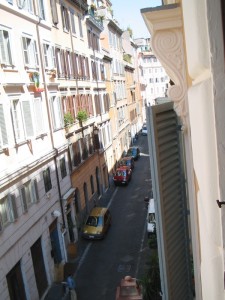
Just as suddenly as it began, it was done.
We counted four priests on the flight, and we spent a little time in conversation with one, who was heading back to the Pontifical Academy in Rome after Easter break. He’s studying canon law, and it’s apparently cheaper, even with transportation issues, to do this in Rome than in the United States.
No Plan, However Cunning, Survives Contact with Rome
I’m a planner by nature. Something to do with my Prussian heritage, no doubt. I had every day’s activities plotted out with all the precision of a Field Marshal on maneuvers. Things to see, neighbourhoods to explore, relatives to meet, even downtime: all planned.
I think I can assert with some confidence that the Grand Plan did not survive our first hour in Rome. No, it suffered a series of small defeats of timing, place, and location from which it rallied but did not recover.
Our plans for the first day (01 April, by coincidence) was probably too ambitious for a first day, but if I’d taken one lesson from previous travels it was this: the only sure cure for half-day jet lag is constant activity until something approaching the local bedtime. Then you collapse. Repeat as required.
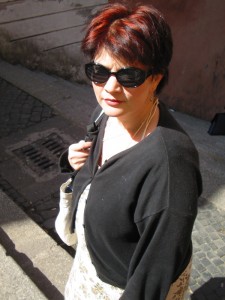
Sadly, I had failed to reckon with two important attributes of life in Rome: traffic and siesta.
Our initial contact with Roman traffic was fairly benign. Our flat was within fifty meters of the Cavour Metro station, and the streets involved were of the narrow mediaeval variety, where the cars couldn’t get up a decent speed because the clearance on either side of them was roughly the width of an emaciated field mouse.
Actually crossing Via dei Cavour, however, proved to be a bit of an issue. Traffic laws, like many other laws in Italy, tend to be regarded as an impossible ideal to which one can aspire, but not possibly attain.
They’re suggestions. And they’re rarely followed.
If you want to cross a street, my advice is to just cross and assume no one is going to hit you. Generally, cars will stop. Scooters and buses will not, however, so you’ve got to be on your toes.
So I learned how to cross the street in Rome, a skill not easily forgotten once learned, but one that took me a while to work out.
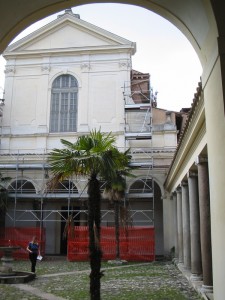
It’s quite civilized, really. Unfortunately, I’d completely failed to take it into account.
So instead of five churches, we saw two: San Giovanni in Laterano and San Clemente.
It was more than enough. San Clemente is a XIIth century basilica built on top of a IVth century basilica built on top of a late first century temple of Mithras.
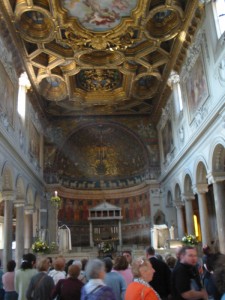
So that was most of the afternoon.
San Giovanni in Laterano (the most breathtakingly beautiful building I had ever seen in my life to that point) is one of the four Patriarchal Basilicas of Rome. It’s the Pope’s episcopal seat. That means the big bishop’s chair in the back belongs to the Pope.
So that was the rest of the afternoon.
Collapse soon followed.
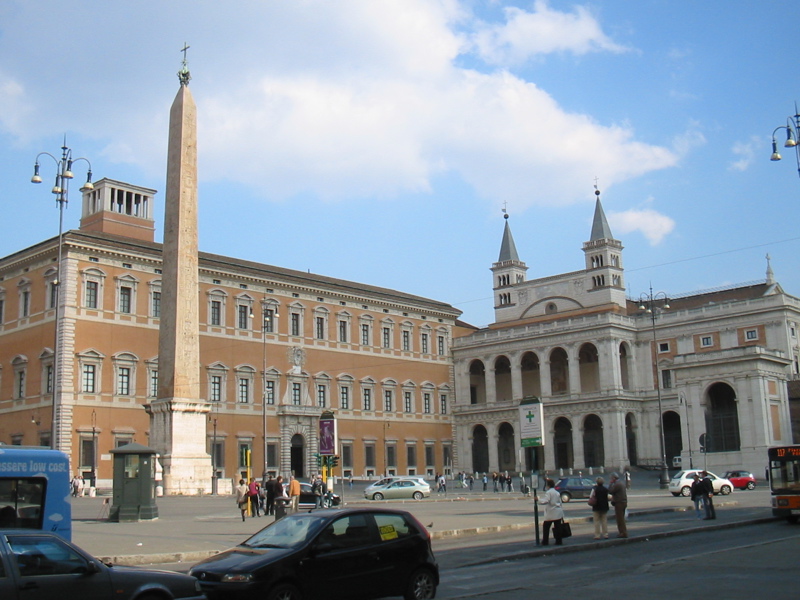
(I have no interior shots because they were holding an event inside.)
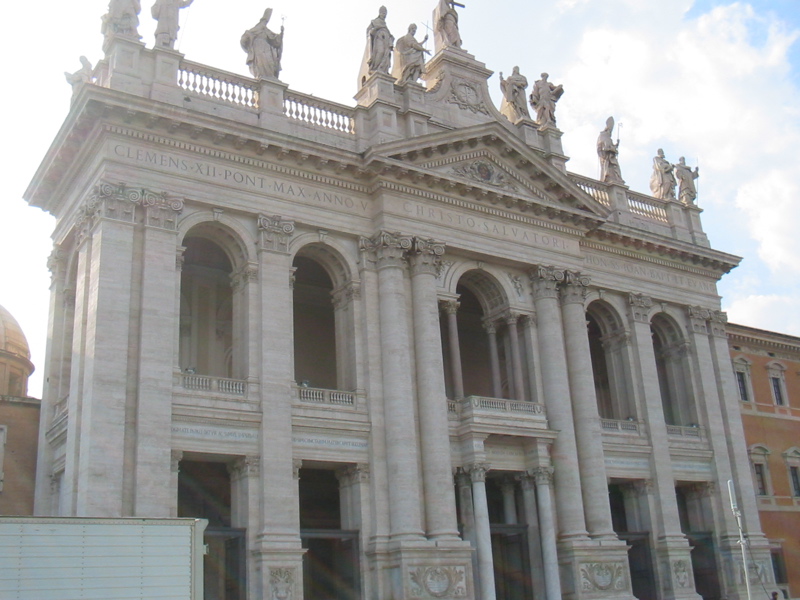
On to Day Two!
Pingback: A Feast For Stones? | Mundus Tranquillare Hic
Pingback: From Living and Chosen Stones | Mundus Tranquillare Hic
Pingback: From Living and Chosen Stones – The World is Quiet Here
Pingback: How the Assumption Saved my Life: a Reflection – The World is Quiet Here